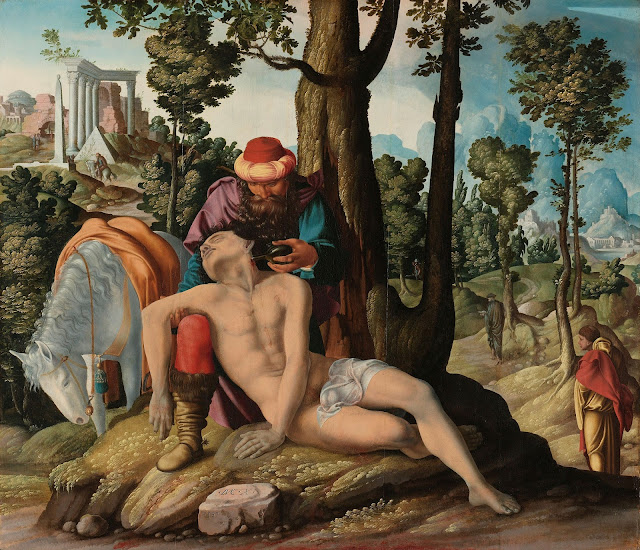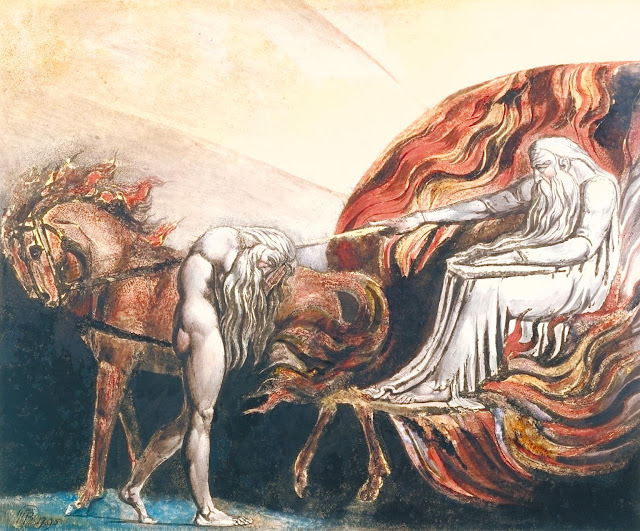 |
| Carlo Crivelli Mary Magdalene ca. 1480 tempera on panel Rijksmuseum, Amsterdam |
 |
| Jacob Cornelisz van Oostsanen Saul and the Witch of Endor 1526 oil on panel Rijksmuseum, Amsterdam |
 |
| attributed to Adriaen Isenbrant Virgin and Child ca. 1530-40 oil on panel Rijksmuseum, Amsterdam |
"Mme. la Duchesse du Maine one day had need of the Abbé de Vaubran and sent one of her valets to find him wherever he might be. The man went, and to his great surprise, found the Abbé de Vaubran saying mass in some church or other. He caught the Abbé as the latter was coming down from the altar and gave him the message, after expressing his surprise at finding him saying mass. The Abbé, who was a great libertine, said "I beg you not to tell the Princess of the state in which you found me.""
 |
| Master of the Good Samaritan (Dutch workshop assistant to Jan van Scorel) The Good Samaritan 1537 oil on panel Rijksmuseum, Amsterdam |
 |
| circle of Marcello Venusti after a drawing by Michelangelo Annunciation ca. 1550-70 oil on canvas Rijksmuseum, Amsterdam |
"A Catholic of Breslau stole from a church of his own faith some little gold hearts and other offerings. Taken before the court, he said the Virgin had given them to him. He was condemned. The sentence went to the King of Prussia for his signature, as is customary. The King summoned a number of theologians to inquire whether it was absolutely impossible for the Virgin to make little presents to a devout Catholic. The theologians of that faith, deeply embarrassed by the question, decided that it was not absolutely impossible. Thereupon the King wrote on the bottom of the sentence, "I pardon the aforenamed N––– , but I forbid him, on pain of his life, to accept any more presents of any kind from the Virgin or the saints.""
 |
| Federico Zuccaro God the Father ca. 1570-80 drawing Metropolitan Museum of Art, New York |
 |
| Godfrey Kneller Elijah and the Angel 1672 oil on canvas Tate Britain |
 |
| circle of Carlo Maratti St John the Evangelist on Patmos ca. 1680-1720 oil on canvas Rijksmuseum, Amsterdam |
 |
| Anonymous Spanish sculptor Corpus ca. 1700 ivory Minneapolis Institute of Art |
 |
| Henry Ferguson Fantasy Landscape with St Charles Borromeo (imaginary classical sarcophagus with carved relief of The Nativity) ca. 1700-1720 oil on canvas Rijksmuseum, Amsterdam |
"The Baron de la Houze had performed a number of favors for Pope Ganganelli, and the latter asked him whether there was not something he could give him that would please him. The Baron de la Houze, who was a sly fellow, asked for the body of a saint. The Pope was surprised at a Frenchman's asking for such a thing, but he arranged to have it given to him. The Baron had a little estate in the Pyrenees which brought him next to nothing and had no market for its products; he had the saint taken there and accredited. The customers flocked in, the miracles started, a village sprang up, the prices of local produce went up, and the Baron's revenue tripled."
 |
| William Blake God Judging Adam 1795 hand-colored relief-etching Tate Britain |
 |
| Pierre-François de Noter The Ghent Altarpiece by the van Eyck brothers in St Bavo Cathedral in Ghent 1829 oil on canvas Rijksmuseum, Amsterdam |
 |
| Thomas Eakins The Crucifixion 1880 oil on canvas Philadelphia Museum of Art |
 |
| Lovis Corinth The Temptation of St Anthony (after Gustave Flaubert) 1908 oil on canvas Tate Gallery, London |
"M. de Lassay, a very gentle man but with a great knowledge of society, said that one must swallow a toad every morning, when one had to go out in the world, so as not to find anything more disgusting during the day."
– passages are quoted from Products of the Perfected Civilization: selected writings of Chamfort, edited and translated by W.S. Merwin (New York: Macmillan, 1969)